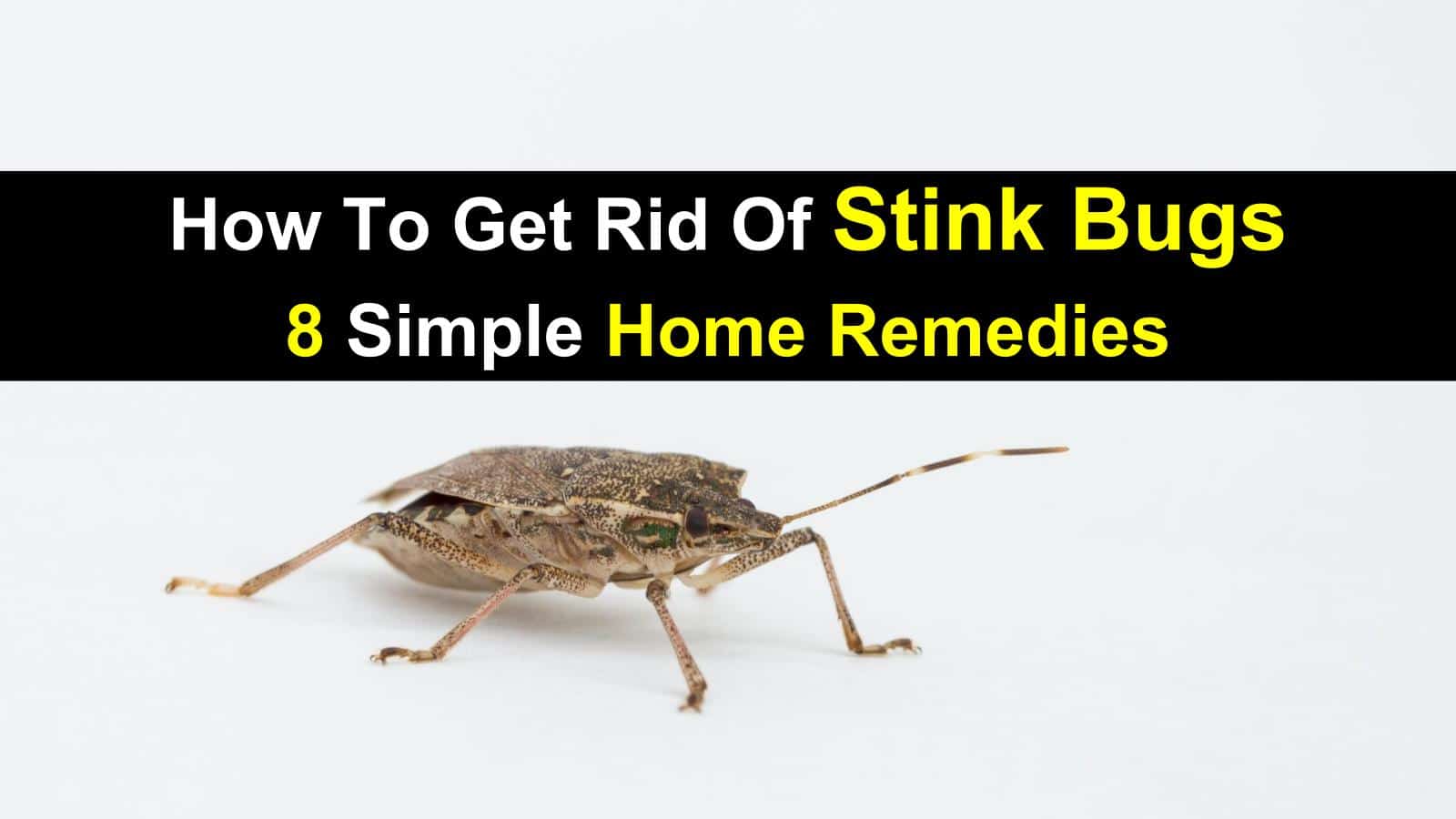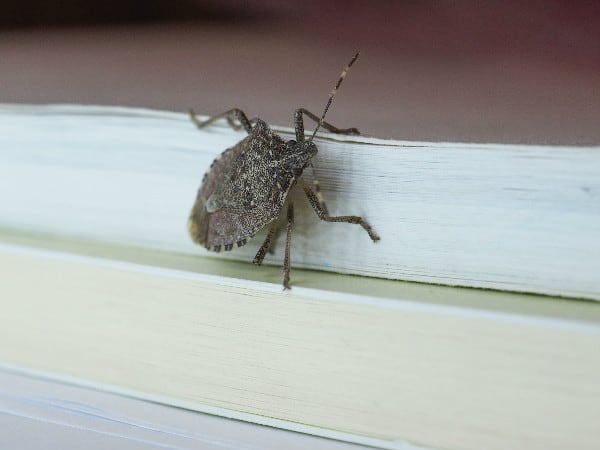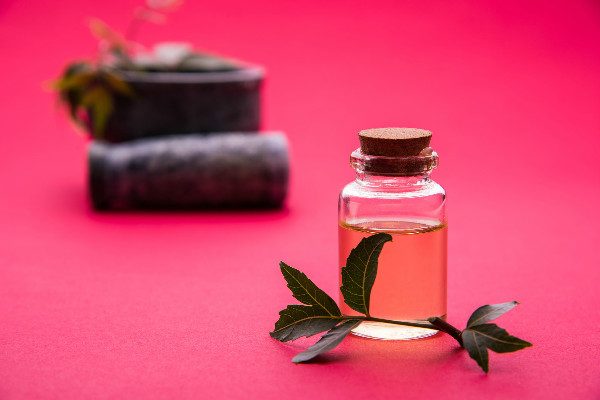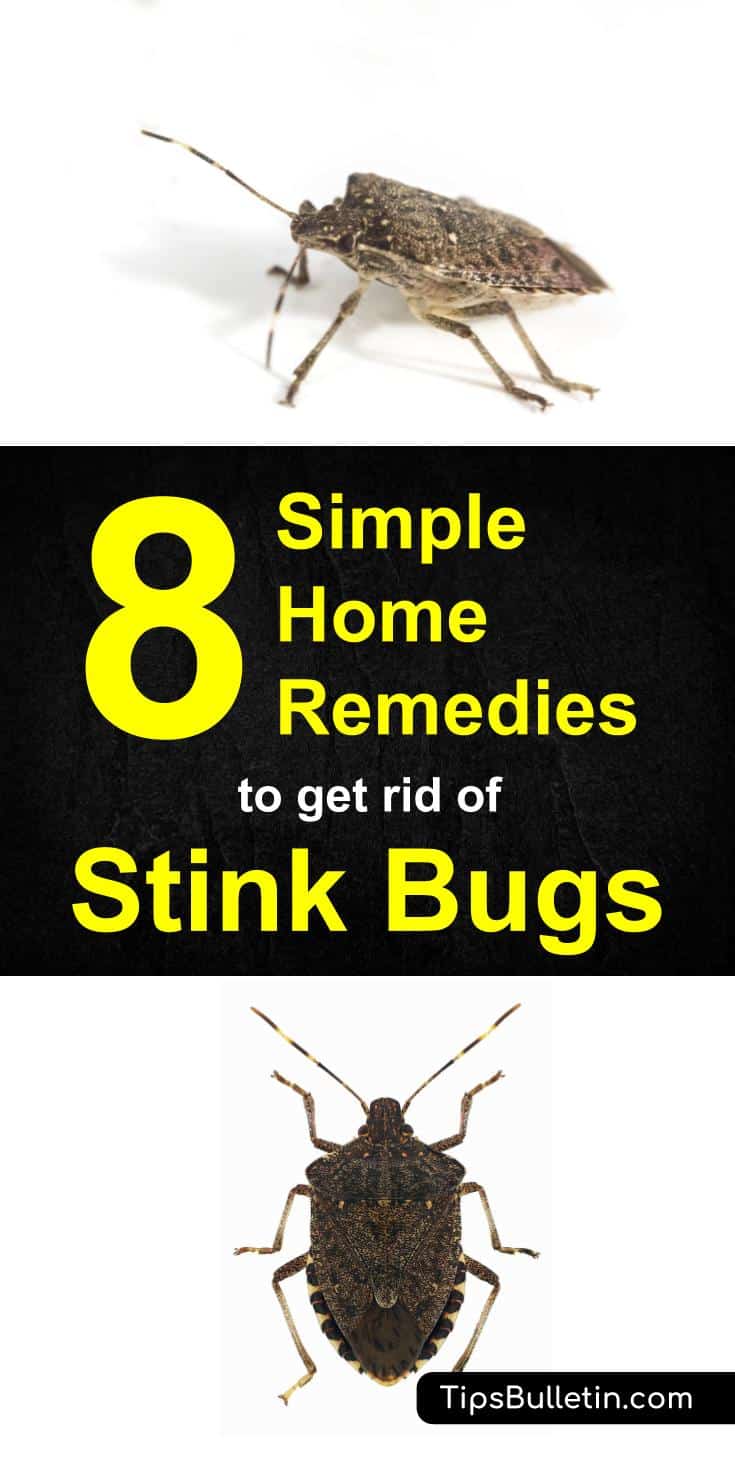Maybe you’ve been there: it’s summer. It’s pleasant and warm. You’re used to bugs getting into the house from time to time. One night, you find a large, brown bug crawling on the wall. Thinking nothing of it, you grab a tissue and squish it, only to realize that now your room is home to an unpleasant odor. You’ve killed a stink bug.
Thinking nothing of it, you grab a tissue and squish it, only to realize that now your room is home to an unpleasant odor. You’ve killed a stink bug and, if you didn’t know where they earned their name, you do now. There must be better ways to get rid of stink bugs.
Many homeowners consider the Halyomorpha halys, also known as the brown marmorated stink bug or shield bug, as a nuisance because of its obnoxious odor. They enter homes during the summer months and spend winter in the warmth of wall cracks, crawl spaces, and attics.
Come spring, they come out from hiding to go back outside and feed on plants. During this time, you will see them gathering on walls and windows.

There are various ways to get rid of backyard pests, including stink bugs and making your own homemade pigeon repellent.
What Do Stink Bugs Look Like?

Stink bugs come from China and the far East, and the 1990s saw their introduction to the United States. They can grow to almost 2 centimeters long. They come in a variety of different colors depending on geographic location and the type of bug, ranging from brown to green.
Descriptions of their appearance depending on who you ask. Some will call them large, oval-shaped insect, while others suggest that their bodies are shield-shaped. They have a total of six long legs that extend from their sides, making them appear deceptively large. They are pretty big, however, tending to be almost as wide as they are long.
Do Stink Bugs Bite?
Homeowners regularly ask: do stink bugs bite? It’s rare that a stink bug will bite a human being and will only do so when they feel threatened. Stink bugs are herbivores and prefer to feed on vegetables, fruits, and host plants like apples, green beans, soybeans, peaches, pears, and cherries.

If you do experience a stink bug bite, you’re likely to experience some pain and swelling, but the bites are otherwise harmless. Many people think that the stink they emit is a poison.
However, the unpleasant smell is a result of a liquid they emit to deter predators. And while a stink bug bite is harmless to adult humans, for the most part, it can be dangerous to small children and pets.
How to Get Rid of Stink Bugs
While stink bugs are largely harmless, you probably don’t want them crawling around in your home. There are a few ways to get rid of stink bugs.

Prevention
Exclusion is the best treatment for stink bugs. So, before you ask how to get rid of stink bugs, let’s talk about how to fend them off. If they can’t get into your house (or don’t want to), you don’t have to worry about them.
As mentioned, stink bugs enter homes via cracks in the siding and foundation.To fend off stink bugs use mesh screening over air vents, chimneys, and other susceptible areas. Similarly, if you have holes in your screens, patch them up. Check doors for points of ingress.
Cracks and holes in the walls and foundation can be a point of ingress for stink bugs. Patch points of entry with high-grade silicone caulk. This should keep stink bugs away for good.
While stink bugs have unpleasant aromas of their own, there are smells they dislike too. Wipe down the screens of your windows and doors with scented dryer sheets. Stink bugs hate the smell, so they’ll stay away.

There are a couple of extra things you can do to keep stink bugs away from your home. Stink bugs like weeds, so get rid of them. Kill some of the bugs outside your home, as the scent will drive others away.
And, if you okay with the possibility of a sting or two, grow wildflowers in your yard. Wasps are natural predators to stink bugs, so having wasps in the area will reduce the stink bug population.
Release Them
If you have a stink bug or stink beetle as they are often called, in your house, avoid swatting or otherwise antagonizing it, because doing so will cause it to panic and release its odor. Instead, take a plastic bottle and use the lid to collect the stink bug, and then toss it outside.
You can also use plastic bags. Using a plastic bottle is ideal, however, because if the bug decides to stink, you trap the odor in the bottle. Once you have the bug, flush it down the toilet or (if the weather is cold) stick the bottle outside, where the bug will freeze. If it’s summer, put the bottle in the freezer for the same effect.
Make a Stink Bug Trap
If you have a lot of stink bugs in your home and getting rid of them individually is impractical, consider making a trap. You can make a trap with a 2-liter soda bottle, LED light, electrical tape, and some supplies you probably have around the home. Here’s how.
Use a razor blade to cut off the top of the bottle. Cut just above the label. You’ll be cutting off approximately the top 1/3 of the bottle. Set the top of the bottle aside for the time being, as you’ll be using it later. Wrap the bottom of the bottle with black electrical tape.
Set the LED light at the bottom of the bottle. Take the bottle top from earlier and place it upside-down into the bottle. You’ve created a funnel.
The sides of the bottle are slippery, so stink bugs will have a hard time climbing. Stick strips of masking tape along the outside of the bottle. The stink bugs will now be able to climb the sides, at which point they’ll fall into the funnel. Once they’ve entered the bottle, they’ll be unable to climb out again.
Use a long object to turn on the LED light. Leave the trap out overnight. The LED light will attract stink bugs. In the morning, you’ll be able to dispose of them.
What About Insecticides?
You’ll want to avoid the use of insecticides in battling stink bugs for multiple reasons. First, adult stink bugs are hardy may shake off the effects. Also, by using insecticides, you expose members of your household and yourself to toxic chemicals that can impair your health.
In cases where you’re killing stink bugs in wall cracks, the stench of the carcasses will attract carpet beetles—and now you’ve replaced one problem with another. For that reason, you’ll want to stick to natural remedies.
Home Remedies for Stink Bugs
Garlic
Do you like the smell of garlic? Stink bugs hate garlic. There are a couple of ways you can use garlic to keep stink bugs away from your home.
One way is by chopping up garlic and leaving the bits where you know the stink bugs are entering your home. The other is by making a mixture of garlic powder and water and spraying common points of ingress, which is especially useful if you’ve yet to caulk cracks and holes.
You can also use this spray on your clothing as a homemade insect repellent but know that you might not repel just bugs, but alienate friends, as well!
Vacuum
Sometimes, simplicity is the best route. Use a vacuum cleaner to suck up stink bugs. You’ll want to use a bagged vacuum, however. When sucked up by a vacuum, stink bugs feel threatened and release their stink.
If you’re using a bagless vacuum, the odor will linger, and you’ll be smelling it for days (if not longer). By using a bag, you keep the smell contained. When you’re finished vacuuming the stink bugs, throw the bag away.
Soapy Water
Soap is effective in killing stinkbugs as it breaks down their exterior and leaves them dehydrated. A soapy water mixture can be sprayed directly on the stinkbugs. The safest option is to use a mild detergent, which will take care of the stink bugs without damaging your property or health.
The solution only takes a few minutes to put together, and the result is safe, natural, and effective. Best of all, there’s a good chance that you already have the ingredients in your house, saving you a trip to the store.
Mix up the ingredients in a sprayer and spritz all bugs you see.
Hairspray

Hairspray, on its own, won’t kill stink bugs. What it will do, however, is paralyze them. Once paralyzed, you can then drop them into a bowl of soapy water, throw them outside, or flush them down the toilet. To use the hair spray, spray it directly onto the stink bug.
Neem Oil
Technically, neem oil — pressed from seeds of the neem tree — is an insecticide. It is, however, a natural insecticide, meaning it’s effective against stink bugs and lacks the chemicals and additives characteristic of traditional over-the-counter insecticides.
While you wouldn’t want to get OTC insecticides on you, neem oil can actually be beneficial for your skin. Neem oil works by disrupting the feeding instincts of stink bugs, thus starving them and preventing them from laying eggs.
Use neem oil by combining it with warm water and spraying down common points of entry. Points of entry include windowsills, doors, and fissures in your walls and foundation. If you’ve noticed that stink bugs are attracted to certain places in your house, give the area a good coating.
While neem oil won’t kill the bugs immediately, you should notice a decrease in the number of stink bugs in and around your house over the long term.

Diatomaceous Earth
Diatomaceous Earth (DE) is a type of sedimentary rock used for a variety of purposes. DE contains traces of silica, alumina, and iron oxide. In powder form, it is a natural pesticide and works great to kill silverfish, bed bugs, ants, and even spider mites. It is also one of the most effective home remedies for getting rid of roaches fast. A chalky powder, DE works by breaking down the exoskeleton of the bugs and dehydrating them.
To use DE, spread it around the inside and outside of your house. Focus on areas where stink bugs seem to congregate, as well as common points of entry such as windowsills and doorways. If you see any stink bugs, feel free to sprinkle the powder onto them directly.
Mint
If you’d prefer to use repellents instead of substances that will outright kill stink bugs, but you find the smell of garlic unsavory, consider using mint. Mint works the same way as garlic: the pungent aroma repels stink bugs without killing them.
To use mint, use peppermint oil and mix with some water in a spray bottle and apply to points of ingress. You should see a reduction in the number of stink bugs in your house. Similarly, you can also grind up fresh mint leaves and use them instead of the oil.
Hot Peppers

A hot pepper solution will kill stinkbugs immediately. Capsaicin, the chemical in hot peppers that gives them their signature heat, works by burning the exterior of the stink bugs.
To use it, let hot peppers (jalapenos, habaneros, etc.) soak in water and then pour the solution into a spray bottle. Spray it directly onto the stink bugs.
Stink Bugs Stink!

Seeing a stink bug in your house can, well, stink. On the bright side, preparation and the right tools mean you can deal with the bugs with little to no drama — and you can do it without exposing yourself to the odor that gives stink bugs their name.
In this article, you learned several home remedies to get rid of stink bugs. You’ve learned about how to prevent them from entering your home in the first place, you’ve learned how to trap them, and you’ve learned solutions for getting rid of them once they’re inside.
Do you know someone who has a problem with stink bugs? Use the buttons below to share on Facebook, Twitter, and Pinterest!
